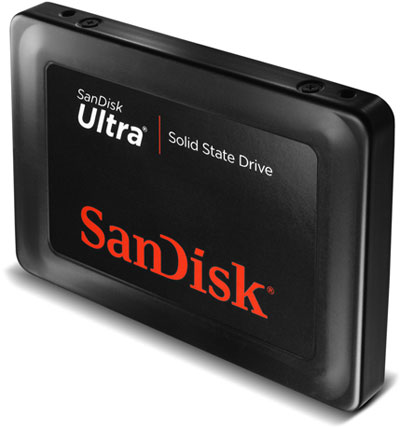This year’s devastating floods in Thailand have upended lives. They also illustrate the interconnected nature of the global economy. Take, for instance, Toyota. The Japanese automaker expects parts shortages in the region to clip its profitability and result in “230,000 vehicles in lost production this business year,” according to this Reuters report.
The effect on several technology companies has been similarly profound, if not more so. Hard drive manufacturers are feeling the pinch too. Stockpiles are expected to run out this quarter, which will crimp PC shipments in Q1 2012.
George Crump of InformationWeek predicts that solid-state storage technologies are poised to make huge inroads as tight hard drive production creates openings for SSDs like the SanDisk model pictured above.
As this next decade closes, there will still be large farms of hard drive-based data centers, but these may be limited to specific use cases: cloud storage providers and extremely big data analytics are two good examples. It’s reasonable to assume though, that the typical organizational data center will be predominantly based on solid-state for its storage infrastructure. As we’ve discussed in the past, those data centers are likely to include multiple levels of solid-state technology. Clearly the move is on. The current hard drive shortage is adding fuel to the fire and significantly speeds up this transition.
When the cost of hard drives start rising past near-impulse buy status, you can also expect consumers to get savvy about storage and embrace the cloud variety for backups and the sort. They’ll learn to ‘live’ with the capacity constraints of SSDs versus hard drives.
It’s a trade-off, but one that’s counterbalanced by snappy performance and energy savings. Not a bad compromise.
Source: InformationWeek

